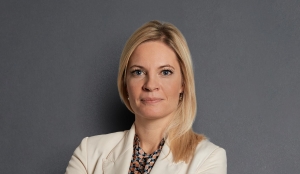Developments in Open Banking: Variable Recurring Payments and Sweeping
The continued roll out of open banking is seeing its next major step forward as the nine largest banks in the UK (the CMA9) prepare for the implementation of Variable Recurring Payments (VRPs) for sweeping in accordance with a revised timetable agreed by the Competition and Markets Authority’s (CMA) at the end of 2021. As we approach the first milestone of this revised timetable (with the CMA9’s submission of detailed delivery plans to the OBIE by January 2022) we take a look at the plan for the year ahead and what VRPs could mean for the future of payments.
What are VRPs and sweeping?
VRPs are new open banking APIs which will enable Payment Initiation Service Providers (PISPs) to initiate a sequence of payments for a customer at specified intervals and amounts. The payments are initiated using a long-held consent (VRP Consent), where:
- the VRP Consent must be authorised by the Payment Service User (PSU) to the PISP once Strong Customer Authentication (SCA) is carried out by their ASPSP (VRP Consent Setup), however thereafter each individual payment instructed (VRP Payment) using the VRP Consent will not require SCA of the PSU by the ASPSP (subject to the PISP re-confirming the PSU’s consent every 90 days);
- the timing or amount of each payment need not be fixed during the VRP Consent Setup but is instead subject to the constraints of certain parameters (VRP Consent Parameters), agreed between the PISP and the PSU, which are enforced by the ASPSP; and
- the VRP Consent Parameters are included within the VRP Consent and are therefore subject to SCA of the PSU by the ASPSP as part of the VRP Consent Setup.
This is a welcome advancement for open banking use cases which currently only facilitate the provision of one-off immediate payments which the customer needs to separately authenticate (unless the ASPSP make identify a relevant exemption to SCA).
The first step will be for the CMA9 to make these VRP APIs available for “sweeping”. This is the transfer of funds between two accounts belonging to the same PSU. This can be used for example to automate a fixed amount to be sent to a savings or investment account each month, or for sweeping funds between current accounts to allow a customer to benefit from new account feature rates or fees without having to switch current account.
The OBIE Roadmap for VRPs
As we look forward at what the next steps might be for VRPs, it is helpful to recap on the Open Banking Implementation Entity’s (OBIE’s) Roadmap which was created in consultation with the CMA and provides a framework for the implementation of Open Banking[1]. The Roadmap sets out several action items, amongst these being the creation of technical standards for VRPs that are compatible with PSD2, the UK Payment Services Regulations 2017 and the GDPR.
Crucially, while the OBIE is required to create technical standards for VRPs, the CMA9 are not required to implement VRPs for all use cases. Rather, the requirement to implement payments sweeping stands separately from other VRP use cases, albeit that the CMA has ordered the CMA9 to implement VRPs as the mechanism for implementing sweeping. For use cases unrelated to sweeping, the use and implementation of the VRP standards are optional and at the discretion of the CMA9 firms.
The CMA had originally set a target of implementing VRPs for sweeping by 31 January 2022. However, following recommendations from the OBIE, the CMA has permitted the CMA9 to push back the deadline. CMA9 firms were due to submit a detailed delivery plan to the OBIE by January 2022, will begin third party provider (TPP) testing and validation in Q1 of 2022, and must successfully complete testing of the VRP standard in a live environment by July 2022.
What’s next for VRPs?
Clearly “sweeping” is only scratching the surface of the potential use cases for VRPs, which are of potential application to a wide variety of recurring payments, and as an alternative to traditional direct debit or card on file payments that are made on a fixed period basis.
The Proposition Paper published by the OBIE in November 2020 describes a number of use cases for VRPs, including:
- automated payments for electricity bills, up to a £100 per month;
- connecting a bank account to a social network app for in-app authentication of payments;
- setting a limit of six months of payments for a new subscription;
- automated payments of ride-hailing fees, up to £45;
- one-time payment set-up for one-click payments offered by an online marketplace;
- using a third-party smart saving app to move money between bank accounts to a savings account on a flexible / variable basis;
- using a third-party service that monitors bank accounts and maintains a threshold balance, or helps avoid overdraft fees by moving funds as and when required between accounts; and,obtaining short term credit to avoid overdraft, then automating repayments to credit to minimise overdraft fees and borrowing costs.
The plan is for VRPs to be easier and quicker to set up than existing payment methods, giving consumers the ability to manage payments more easily, and embedding payments into a wider range of customer journeys.
As a result, VRPs are set to become another example of the increasing trend of “embedded finance” and the overall evolution of open-banking into open finance.
Clearly user experience is one of the key objectives at the heart of the open banking agenda and both regulators and industry alike will be watching closely as the use of VRPs for sweeping is rolled out over the coming months.
If you require further information or have any further questions, please contact our payments team.
If you would like to receive our regular Payments alerts in your inbox, click here.
If you would like to read Bird & Bird's previous alerts, please check out our Payments InFocus webpage here.
[1] CMA - Notice of approval of changes to the Agreed Timetable and Project Plan May 2020
















